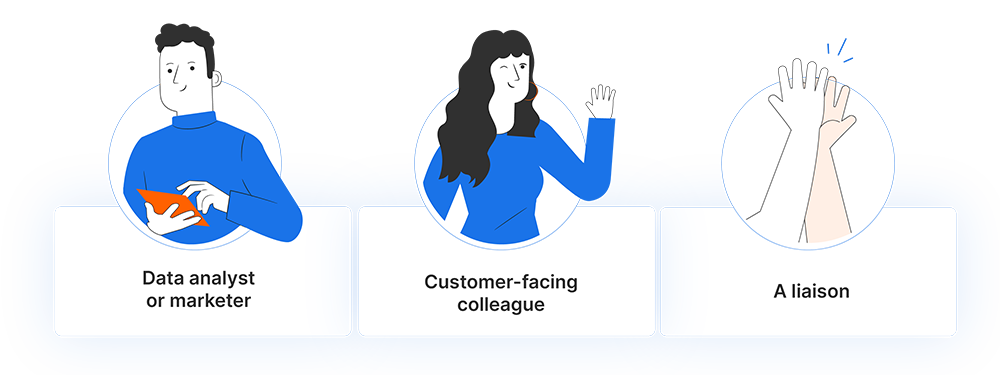Retention and repeat customers: The winning formula for ecommerce
Marketers, company owners, and salespeople alike spend disproportionate amounts of time trying to acquire new customers. Converting prospects to clients is, of course, a route to more sales. But how much time are client-facing teams spending on retention? Are you investing enough in efforts to sell more to those who already know you? Do you have automations that work for you, to consistently convert new buyers into repeat customers?
Customer retention has a direct impact on sales and costs. To help you make the most of your loyal customers and recent adopters, we’ll help you understand:
- The value of retention
- How to plan for future customer value
- Tips for increasing retention
Sell more at a lower cost
Many will tell you that acquiring a new customer costs 5x more than it does to retain a repeat customer. Today the famous 5x rule is clichéd and outdated — it measured mass produced commodities before ecommerce became commonplace.
In reality, the debate around the cost of acquiring a new buyer versus retaining a repeat customer is mute. Companies instead should aim to focus on a customer’s lifetime value, or CLV. Brands that offer customization on their products, in particular, are better to plan for future value. This is because a 5% increase in your customer retention rate can increase billing anywhere between 25% and 95% according to Reichheld of Bain & Company.

How to get repeat customers: Loyal customers are your sales team
The most organic and cost-efficient way of gaining new clients is by word-of-mouth. No matter how large or small a company is, turning repeat customers into brand ambassadors will bring in more business, and increase your brand awareness.
If you’ve ever asked friends for a Netflix recommendation, for restaurant ideas for a date, or to refer you to a local electrician, you know that recommendations are powerful. Word of mouth marketing or WOMMA, part of the Association of National Advertisers, found that 64% of marketing executives believe word of mouth is the most effective form of marketing. However, only 6% claim to have mastered how to get repeat customers through word of mouth marketing.
Recommendations given to customers by a trusted source are more likely to convert. This happens with frequent customers, who are loyal to your brand or identify that you solve a need expressed by someone they know.
By now, you likely understand the value of customer retention. Let’s look into how you can measure changes in retention next, as well as actionable insights on boosting it long-term. Too busy for a deep-dive? Let our specialists offer you tailored advice for your online store.
“You can’t improve what you don’t measure.”
To measure retention, take two indicators: Your repeat customers and total customers. Divide the first by the second to calculate the percentage of customers who buy your products more than once in a given period.
For the purpose of this exercise, consider a repeat customer to be the same as a frequent customer.
Calculate retention:

To get started, choose a period of time. One year should supply you with plenty of data but a three month span can give you a fair idea of progress. Count the number of customers who have purchased something from you twice or more in that period. Then divide this number by your total number of customers in the same period.
The average customer retention rate for ecommerce brands depends on maturity. If your company is barely budding, a 15% rate of repeat customers is exemplary. Whereas an established consumer brand, which invests in and is knowledgeable in customer retention strategies, might be aiming to reach retention rates of 40% to flourish.
Retention teams are trending
Big brands are increasing their focus on retaining the clients they already have. To do so, these B2C brands brought on large in-house data analysis, software development and marketing teams.
These teams are usually composed of:
- A data analyst or marketer with programming experience
- A charismatic, and patient customer-facing colleague
- A liaison between your product lead and the customers

The objective of this team should first be to create clusters of customers that are likely to buy again and enable tailored tactics to each group.
The main aim of clusters are:
- Permitting tailoring to increase customer lifetime value
- Facilitating strategies to raise retention rate
While hiring a team focused on getting repeat customers is a great start, automating their efforts makes them infinitely more scalable.
Aument tip: Automate your retention strategies
Luckily, there is an easier (and more effective) way to get repeat customers. Aument’s tip for business owners is to automate your retention strategies.
If you’re a business owner without the resources, time, or skills to hire for development or data analysts, you can lean on our technology in turning data into business results. Aument calculates, tracks, and, most importantly, automates retention for you.
Ready to discover what tactics will help your specific business model, and make customers love your brand? Install Aument.







